#Animation In Iran
Explore tagged Tumblr posts
Text
Bad news about Iranian Animation(:
This real BAD news,that concerns not only the Present,but the Whole Future of the Iranian Animation Industry.While the occidental news outlets are going with the approach about “the rights of women”,”equality” they don’t care about an awful news.
Iranian animators attracted to foreign studios over weak local currency: expert. December 4, 2022 - 18:37
Photo below: This file photo shows Iranian animators working at a studio of the Institute for Intellectual Development of Children and Young Adults – Kanoon. (Kanoon/Hamid Tavakkoli)

“Due to a sharp decline in the value of the local currency in comparison to the dollar, Iranian animation studios are willing to work for other countries,” Ali Azizi told the Persian service of MNA.
“These studios were previously selling their productions to the Islamic Republic of Iran Broadcasting (IRIB), but I’ve heard that IRIB has not paid them as a result of the precarious circumstances surrounding its funding,” he added.
“Moreover, strict IRIB rules and regulations impose certain restrictions on animation works, while animators want to have a free hand to let them use their creativity. As a result, they are reluctant to work with IRIB,” explained Azizi who was formerly a manager of an animation school.
He has recently quit his job to direct an animation project.
Azizi said there are animation studios in Turkey that are working with Iranian animators who are even allowed to work remotely. Their projects are totally or partly done by Iranian studios.
The Turkish studios pay the Iranian animators less than they pay their local employees. Nevertheless, the wages paid to them are still higher than what they receive in Iran. He said that some Iranian animators have also been duped and have failed to receive their wages from the Turkish studios.
The animation industry has developed in Iran over the past decade, but the country has failed to exploit its commercial potential.
Ashkan Rahgozar, the director of Hoorakhsh, a major animation studio in Tehran, has frequently warned about the emigration of skilled and even semi-professional people working in the country’s animation industry.
Images below:from the iranian,epic,animated movie “The last Fiction”.

In an interview conducted last year, he said the financial motivations are the key factors in these migrations.
“Iran has not done well on efficiently training human resources in this field, and the professionals’ migration issue has really become serious. We are seeing them going to foreign companies for higher salaries. I see no bright prospect for improvement in human resources here, because even semi-professionals are easily attracted by overseas companies,” said Rahgozar who is the director of the acclaimed animated movie, “The Last Fiction”.
MMS/YAW

My Understanding
This is the Real Significant news.I fear that the iranian animated movie “The Last Fiction” might be a Swan Song!(: “Who’s fault is this?” Not of the iranian regime.It’s of others, who fill us with the unessential claims(yes,claims isn’t the real thing)about human rights,and they passby that the strict sanctions make life harder for the creative people,such as Iranian animators.
Source: https://www.tehrantimes.com/news/479368/Iranian-animators-attracted-to-foreign-studios-over-weak-local
#Iranian animation studios#animation in Iran#The Last Fiction#Ashkan Rahgozar#foreign animation studios#Shahnameh#The Book of Kings#Hoorakhsh studios#Shahnameh Ferdowsi#شاهنامه#ابوالقاسم فردوسی توسی#Zahak is the much as Naraku#Iran culture#Tehrantimes#Swan Song#Iranian animators#Inuyasha Naraku
5 notes
·
View notes
Text

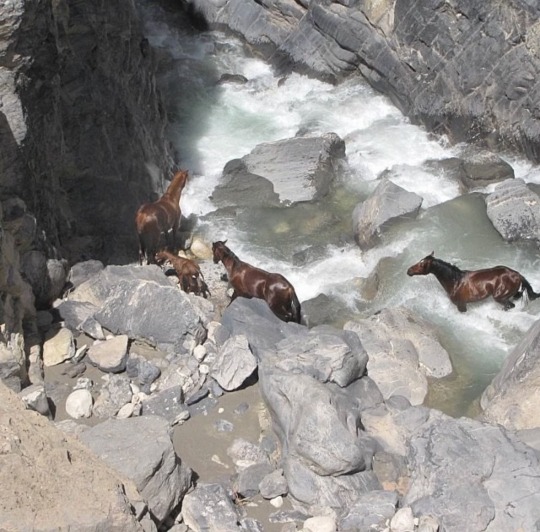
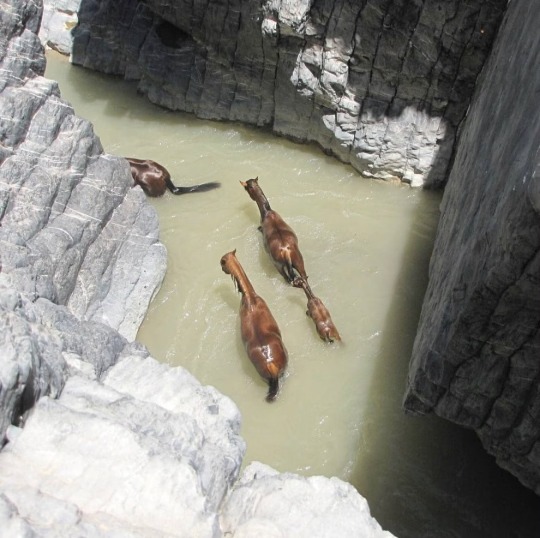
Wild horses crossing a river in Iran photog. Eydi Heydari
#nature#photography#iran#horses#animal#animals#naturecore#river#whimsicore#dreamcore#dream aesthetic#earth#places#art#photos
419 notes
·
View notes
Text

This limestone hedgehog, mounted on four wheels, was discovered near the temple of Inshushinak in Susa, Iran, dating to the Middle Elamite period, circa 1500-1200 BC. The piece is currently on display at the Louvre Museum.
120 notes
·
View notes
Text
One year ago, Hamas animals attacked innocent Israeli teenagers and children. They were doing nothing more than dancing and singing at a music festival, like teenagers all over the world. This attack was sinister and unprovoked. Hamas terrorists followed with more kidnapping, rape, torture and executions in the days October 7th. Know the truth.
#stand with israel#israel#october 7 2023#destroy hamas#free palestine from hamas#israel hamas war#hamas are terrorists#hamas massacre#hamas war crimes#hamas are animals#mahsa amini#stand for the women of the muslim world#stand with the girls of afghanistan#stand with the girls of the muslim world#stand with the women of iran#stand with the children of iran#stand with the children of afghanistan#stand with the women of the middle east#stand with the children of herat city#stand with the women of afghanistan
61 notes
·
View notes
Video
tumblr
Persepolis Directors: Marjane Satrapi & Vincent Paronnaud France/Iran, 2007
#Persepolis#Marjane Satrapi#Animation#Iran#Iranian Revolution#Islam#Women#War#Black and White#Fundamentalism#Iran–Iraq War#Muslim
420 notes
·
View notes
Text
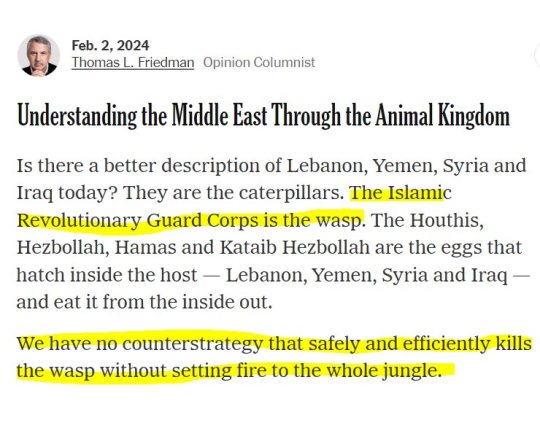



This man is utterly, utterly loathsome and racist.
He also has three Pulitzer Prizes. Which says it all.
#free palestine#muslims#nyt#pulitzer prize#journalism#democrats#republicans#politics#middle east#iran#iraq#usa#animal planet
108 notes
·
View notes
Text

Just smile like that, Tanjiro😭🤌 *Art is mine*
#kny#artists on tumblr#kimetsu no yaiba#fanart#kny tanjirou#demon slayer#demon slayer tanjiro#tanjiro kamado#kamado tanjiro#kamaboko squad#anime fanart#black and white#hand drawn#tumblr draw#giyu x reader#giyu tomioka#kny hashira#demon slayer x female reader#iran
35 notes
·
View notes
Text

first time drawing him its so messy oh my god
#aph persia#hws persia#persia aph#persia hws#hetalia persia#persia hetalia#aph iran#hws iran#hetalia#hetalia fanart#aph#hws#hetalia axis powers#hetalia world stars#digital art#sketch#fanart#manga#anime#digital#my art
52 notes
·
View notes
Text

IRAN
#animal#animals#goth#gothic#gothcore#witch#witchcore#witchblr#cute animals#baby animals#horses#horse#photography#cottagecore#naturecore#farmcore#soft grunge#grunge#alternative#spooky#iran#nature#water#Eydi Heydari#scenery#original content#photographers of tumblr#original photo blog#nature core
45 notes
·
View notes
Text




2200-2000 BC, Baluchistan (Eastern Iran/Pakistan
Copper
Circular support comprising two identical groups with naked hunter grabbing the leg of a wild boar and dog biting its ear.
27 notes
·
View notes
Text
"Smart Kid" movie is a Success.

The wholesome Iranian 3D animation “Smart Kid,” which has been titled the best-selling animation and children’s film in Iran.
Synopsis:
"Mohsen, a little boy who loves superheroes. He always tries to help anybody he comes across. Once he encounters an expired Iranian species and he decides to help the animal to get back to his homeland. However, a trip to the heart of the jungle, fighting the hunters and facing expired creatures is the start of a complicated adventure for Mohsen".
Honar Pooya Animation Studio and the Center for Intellectual Development of Children and Adolescent, which have jointly produced the animated film, have announced that one percent of the proceeds from the sale of the movie will be donated to the underprivileged children in the two regions, Honaronline reported.
The producers said in a statement that “they wish happiness and fulfillment of childhood dreams for all oppressed and innocent children around the world. Hoping that one day the whole world will be full of joy and peace, we have agreed on this decision”.
Produced by Hamed Jafari, the animation has sold close to $1 million since the beginning of its release across the country and brought about 1.1 million viewers to cinemas.
Directed by Behnoud Nekouiee, Mohammad Javad Jannati and Hadi Mohammadian, “Smart Kid” had its national premier at the 41st Fajr Film Festival in Tehran in February, where it won the Best Animation award.
Hooman Hajabdollahi, Mina Qiaspour, Mir Tahari Mazloumi, Hedayat Hashemi, Javad Pezeshkian, Touraj Nasr, Mahsa Erfani, and Nazanin Yari are among the voice actors.
Over 5,300 children have been killed in the Gaza Strip since October 7 amid widespread airstrikes by the Israeli military. Based on the figures, children account for 40 percent of the deaths in Gaza.
The Gaza Strip is the “most dangerous place in the world to be a child,” UNICEF Executive Director said on Wednesday.
“In addition to bombs, rockets, and gunfire, Gaza's children are at extreme risk from catastrophic living conditions. One million children – or really all children inside the territory – are now food insecure; facing what could soon become a catastrophic nutrition crisis,” Catherine Russell said at the UN Security Council briefing on the protection of children in Gaza on November 22.
“Children who manage to survive the war are likely to see their lives irrevocably altered through repeated exposure to traumatic events. The violence and upheaval around them can induce toxic stress that interferes with their physical and cognitive development. Even before this latest escalation, more than 540,000 children in Gaza – half of its entire child population – were identified as needing mental health and psychosocial support,” she noted.
“The public health risks in Gaza are compounded by the virtual shutdown of the health care system. More than two-thirds of hospitals are no longer functioning because of the lack of fuel and water, or because they sustained catastrophic damage in attacks,” the official stressed.
“We are also seeing devastating attacks on schools, with close to 90% of all school buildings sustaining damage. Nearly 80% of the remaining school facilities are being used as shelters for internally displaced people. But even these spaces, where children and families have sought safety after fleeing their homes, have come under attack,” she underlined.
“The destruction of Gaza and killing of civilians will not bring peace or safety to the region. The people of this region deserve peace. Only a negotiated political solution – one that prioritizes the rights and wellbeing of this and future generations of Israeli and Palestinian children – can ensure that. I urge the parties to heed this call, starting with a humanitarian ceasefire as the first step on the path to lasting peace. And I urge you, as Members of the Security Council, to do everything in your power to end this catastrophe for children,” Russell concluded.
Source:https://www.tehrantimes.com/news/491751/Highest-grossing-Iranian-animated-film-dedicates-part-of-sales
#3d animation#Smart Kid#superhero#a boy loves superheroes#Behnoud Nekouiee#Mohammad Javad Jannati#Hadi Mohammadian#iranian animation studios#Animation In Iran#Honar Pooya Animation Studio#Center for Intellectual Development of Children and Adolescent#Iran Tehran#Palestine Gaza#Gaza Strip#ایران#استودیوهای انیمیشن سازی ایران#بچه باهوش#نوار غزه#cultural diplomacy#دیپلماسی فرهنگی مفید
0 notes
Text

So, I'm just scrolling, you know—and I find this article saying finger length determines your personality. And now I'm just SO confused.
Trans-Caucasian Racerunner (Eremias pleskei)
Türkiye, Armenia, Azerbaijan, and Iran
Status: Critically Endangered
#lizard#reptile#reptile art#animal art#herpatology#west asia#asia#middle east#turkiye#armenia#azerbaijan#iran
27 notes
·
View notes
Text
The next section of Cinderella Tales from Around the World is devoted to a lesser-known Cinderella subtype: One-Eye, Two-Eyes, Three-Eyes.
*The most famous tale of this type is the German version from the Brothers Grimm. To summarize:
**A woman has three daughters, each with a different number of eyes: One-Eye, Two-Eyes, and Three-Eyes. The middle sister, Two-Eyes, is hated and abused by her mother and sisters because she's beautiful and normal-looking. (There's no mention of how many eyes the mother has.) Every day she's sent out to pasture the goat, starving because her family only feeds her scraps. But one day she meets a "wise woman" (i.e. a fairy) who instructs her to recite a rhyme, and then her goat will bring her a table covered with food. She does this every day, until her mother notices that she's not eating her scraps anymore. One-Eye goes out to spy on her, but Two-Eyes sings her to sleep. Then Three-Eyes goes out, and again Two-Eyes sings, but in her lullaby she mistakenly sings "Two-Eyes" instead of "Three-Eyes," so only two of her sisters' eyes fall asleep while the third stays awake and sees how she feeds herself. She reports it to the mother, who kills the goat. But the wise woman instructs Two-Eyes to bury the goat's entrails, and when she does, a tree with silver leaves and golden apples grows from the spot. Whenever the mother or sisters try to pick the apples, the branches move out of their reach, but Two-Eyes is allowed to pick them. One day, a handsome young knight rides by, and the mother and sisters hide Two-Eyes under a barrel. But the knight admires the tree and asks for a branch from it, yet neither One-Eye nor Three-Eyes can break one off. Then Two-Eyes rolls some golden apples out from under the barrel, revealing her presence, and gives the knight his branch. The knight wants to reward her, so she asks him to take her away from her cruel family. He takes her to his castle, where the tree magically follows them, and soon afterward they marry. Some time later, One-Eye and Three-Eyes appear at the castle door, now reduced to beggars. Two-Eyes forgives them and takes them in, and her kindness makes them repent their former treatment of her.
*The other tales of this type that Heiner's book features come from France, Scotland, Denmark, Russia, the Czech Republic, India, and the United States.
**There are three French versions: Little Annette, The Golden Pear-Tree, and The Golden Bells.
*** All three include the heroine's ineffectual father, in contrast to the all-female household in the Grimms' version, and in the first and third tales, the wicked women are the heroine's stepmother and stepsisters instead of her birth family.
***In The Golden Bells, the heroine, Florine, is a princess, and her father and wicked stepmother are the king and queen. In Little Annette, the girl's eventual husband is a prince, while in the other two, he's a king.
***None of these versions include the "one-eye, two-eyes, three-eyes" motif either: in Little Annette, the stepmother magically adds an eye to the back of her youngest daughter's head, which stays open while her own eyes sleep, while in the other two the (step)sister just pretends to sleep.
***In all three, the heroine receives her food by tapping a sheep with a magic wand. In Little Annette, the wand is given to her by the Virgin Mary, in The Golden Pear-Tree by a man, and in The Golden Bells by her dying mother at the beginning. Also, rather than personally killing the sheep, the (step)mother pretends to be sick and insists that only eating the sheep's meat will cure her, so the father kills it.
***In Little Annette, the magic tree that grows from the sheep's remains just bears "the most tempting fruit," while in the other two tales, as their titles imply, it respectively bears golden pears and constantly-ringing golden bells.
***The Golden Pear-Tree and The Golden Bells both continue after the heroine's marriage with a plot against her while her husband is away at war. In The Golden Pear-Tree, the heroine gives birth to twins, and her wicked mother-in-law replaces them with two puppies, which causes the king to order his wife executed. Unfortunately, this story only survives as a fragment with no ending, but presumably the heroine escapes somehow and reunites with her husband and children after the truth is revealed. In The Golden Bells, the stepmother throws Florine into a river. But when she does so, the bells on the tree stop ringing, and the king hears this, realizes something is wrong, hurries home, and rescues Florine.
**In the odd Scottish tale of The Sheep's Daughter, the heroine is the king's secret illegitimate daughter, whose mother is a sheep. (Apparently an anthropomorphic one who lives in a house, although the queen is able to order her slaughtered like any other sheep.) The wicked women are the king's wife and legitimate daughters. The king secretly pays regular visits to the sheep and her child, bringing them gifts, until the queen has her two daughters spy on him. The sheep magically sings the first princess to sleep, but accidentally leaves one of the second princess's eyes awake, so the queen learn's what's happening, and has the sheep killed. The heroine buries her mother's bones, then lives alone in their cottage for five years, at which point a prince gives a three-day feast. The heroine's mother rises from her grave, transformed from a sheep into a beautiful princess: she dresses her daughter in finery, and from there on the story becomes Cinderella, with the heroine attending the festival and losing a slipper on the third night, which the prince uses to find her.
**In the Danish Mette Wooden-Hood, the wicked women are again the heroine's stepmother and stepsisters: the stepmother starts out as Mette's seemingly-kind schoolteacher, who of course manipulates her into convincing her father to marry her. Mette's helper is her mother's spirit, who comforts her at her gravesite and summons doves to feed her. But eventually the younger stepsister, who has an extra eye in her neck, learns this, and Mette is locked up so she can't visit the grave anymore. Mette finally manages to run away, however, and her mother's spirit gives her a wooden dress to wear and a box that will grant her wishes when she taps it. From this point on, the story becomes like Donkeyskin or All-Kinds-of-Fur, as Mette becomes a scullery maid at a palace, attends church in magic finery three times, and on the third Sunday loses a shoe.
**In one of the two Russian versions, Little Havroshecka, the heroine is an orphan while the wicked mother and daughters are her foster family, and in other, Burenushka, they're her stepmother and stepsisters: they're also a queen and princesses in the latter. In both of these versions, "One-Eye, Two-Eyes, and Three-Eyes" are the heroine's three wicked stepsisters, in contrast to the Grimms' version where Two-Eyes is the heroine. The animal helper is a cow, who magically spins flax for the heroine in Little Havroshecka, magically feeds her in Burenushka. In the former story, after the cow is killed, a silver tree grows from her remains with golden leaves and crystal apples, which only Havroshecka can pick, while in the latter tale, a berry bush grows on which birds sing, and the birds chase away anyone who tries to pick the berries except for the heroine. Little Havroshecka ends with Havroshecka's marriage, while Burenushka continues with the heroine giving birth to a son, her stepmother turning her into a goose, and her coming back each day to briefly resume human form and suckle her baby, until her husband finds out and breaks the spell by burning the goose skin.
**In the Czech tale of The Girl Who Had a Witch for a Stepmother, "One-Eye, Two-Eyes, and Three-Eyes" are again the heroine's three wicked stepsisters, and the animal helper is again a cow, who spins the heroine's flax for her, as promised by her mother's spirit. After the cow is killed, her remains produce an apple tree and a well full of wine, both of which only the heroine can access. A prince proposes marriage to her as a result, but on their wedding day the stepmother locks her up and sends one of her own daughters disguised in the bridal clothes, cutting her feet to make the shoes fit. But the heroine turns herself into a bird and flies after her prince and stepsister, calling out the truth. Thus she gets her happy ending.
**The Iranian tale of The Story of How Fatima Killed Her Mother and What Came of It, is obviously related closely to the Iranian Cinderella tale shared earlier in the book, The Story of Little Fatima. Once again, we have a heroine named Fatima whom a wicked woman persuades to kill her own mother, and then persuade her father to marry the woman who urged it. But after the stepmother turns abusive and starves her, the mother's forgiving spirit instructs Fatima in a dream to buy a yellow calf, which produces food from its ears. Meanwhile, the stepmother gives birth to two daughters of her own, Four-Eyes and Four-Stumps, who spy on their half-sister when they're old enough and discover her secret. After the calf is killed, the story has various twists and turns that include a "kind and unkind girls" episode, a Cinderella-style lost shoe leading a prince to Fatima, and Four-Stumps murdering and replacing Fatima after she gives birth to a son, only for Fatima to miraculously come back in the end.
**The Indian tale of Lal Badshah, the Red King, or The Two Little Princesses revolves around two sister princesses who are abused by their stepmother. They secretly find food each day on their mother's grave, until their stepmother's cat spies on them and reports it, and the wicked queen manipulates the king first into desecrating the grave, and then into abandoning his daughters in the forest, Hansel and Gretel-style. After many more twists and turns, the two finally live happily ever after, with one princess married to a king and the mother of a son, and her devoted sister by her side.
**Last of all is a Latin American tale called One-Eye, Two-Eyes, and Three-Eyes, where as in the Grimms' tale, Two-Eyes is the heroine abused by her cruel mother and sisters. But otherwise, this is a Cinderella story. A prince gives three balls, and Two-Eyes is forbidden to go; but before the first ball, the prince meets and falls in love with Two-Eyes, so he secretly sends her a coach and finery each night. On the night of the third ball, the mother has Three-Eyes stay home to spy on Two-Eyes, and though two of her eyes fall asleep, her third eye discovers Two-Eyes' secret. The next day, when the prince comes to the house to ask for Two-Eyes' hand in marriage, the mother locks her away and tries to offer him first One-Eye, then Three-Eyes. But of course he rejects them both and finds Two-Eyes in the end.
*It's strange that the Grimms, who normally bowdlerized wicked mothers into stepmothers in their tales, offer one of the very few versions of this tale where the heroine's abusers are her own mother and sisters instead of a stepmother and stepsisters. That said, in their footnotes they do allude to other variants where the heroine is a stepdaughter and her helper is her mother's spirit.
I'm almost finished reading this enormous anthology. After this brief section comes the last set of tales: Cinderella tales that don't fit into any of the usual categories.
@ariel-seagull-wings, @adarkrainbow, @themousefromfantasyland
#cinderella#one-eye two-eyes three-eyes#fairy tale#variations#cinderella tales from around the world#heidi ann heiner#the brothers grimm#tw: animal death#tw: violence#tw: murder#germany#france#scotland#denmark#russia#czech republic#iran#india#the united states
38 notes
·
View notes
Text
Marisa kirisame pc98 and Jackalman Touhou Pc98
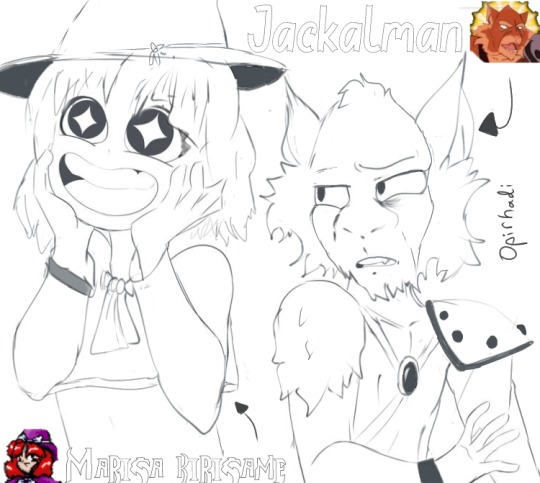
#jackalman#thundercats#anime#touhou project#touhou pc98#marisa kirisame#Jackal#furry#furry fandom#my art#fanart#scketch#white background#touhou#touhou fanart#iranian art#artists on tumblr#illustration#digital art#drawing#artstyle#artwork#Marisa#blond girl#red hair#Magician#fantasy art#europe#Iran
21 notes
·
View notes
Text
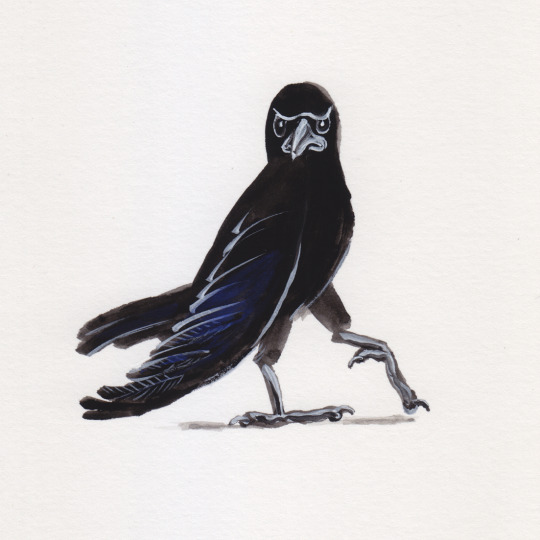
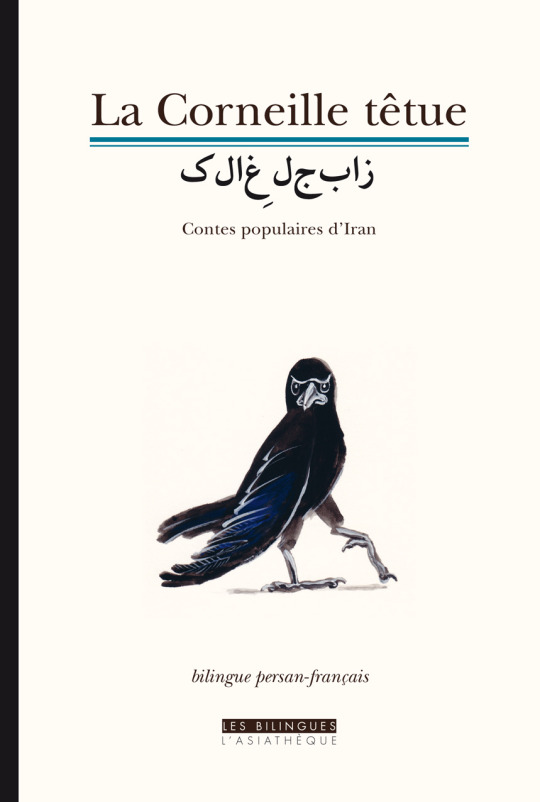
La Corneille têtue, illustration de couverture pour un recueil de contes populaires d’Iran, éditions l’Asiathèque – gouache, 2022. Graphisme Jean-Marc Eldin.
#2022#couverture#corneille#corvide#corvides#oiseau#animals#animaux anthropomorphes#pas#gouache#illustration#iran#contes#l'asiatheque#jean marc eldin
34 notes
·
View notes
Text
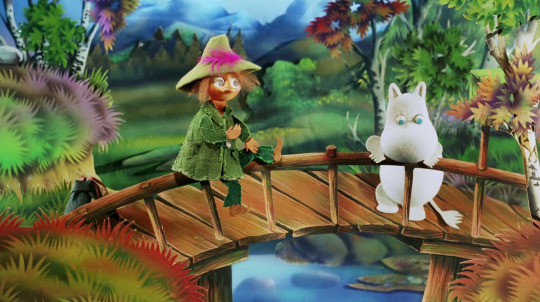
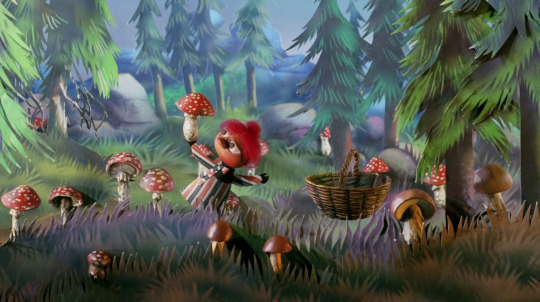
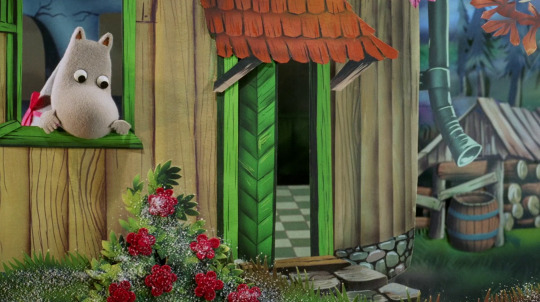
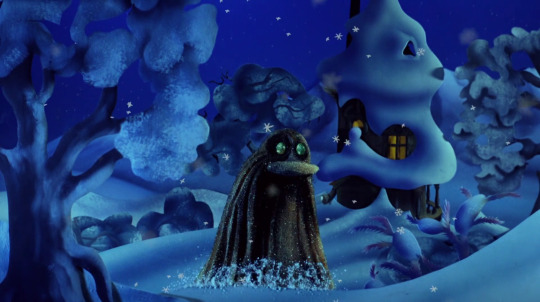






Moomins and the Winter Wonderland (2017) | dir. Iran Capelan, Jakub Wronski
#moomins and the winter wonderland#muumien taikatalvi#magiczna zima muminków#iran capelan#jakub wronski#films#movies#stop motion#screencaps#animation
220 notes
·
View notes